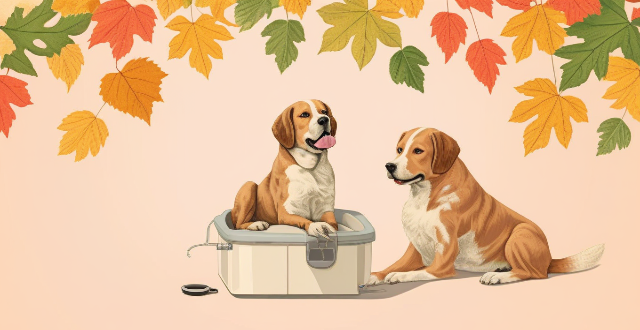Bathing your dog is crucial for their health and hygiene, but the frequency depends on breed, coat type, activity level, and individual needs. Generally, short-coated breeds need bathing every 4-6 weeks, long-coated breeds every 2-4 weeks, and double-coated breeds every 6-8 weeks or when necessary. Active dogs may require more frequent bathing due to exposure to dirt and other substances. Dogs with specific health conditions or skin issues may benefit from regular medicated baths. When bathing your dog, follow best practices such as using a suitable shampoo, brushing beforehand, gathering supplies, wetting thoroughly, applying shampoo evenly, rinsing thoroughly, towel drying gently, continuing brushing post-bathing, using leave-in conditioner if necessary, and monitoring for any adverse reactions.

How Often Should I Bathe My Dog?
Bathing your dog is an essential part of maintaining their health and hygiene. However, the frequency of bathing depends on various factors such as breed, coat type, activity level, and individual needs. Here are some general guidelines to follow:
1. Breed and Coat Type
Different breeds have different coat types, which affect how often they need to be bathed. For example:
- Short-coated breeds: These dogs require less frequent bathing, typically every 4-6 weeks or when they become dirty or smelly.
- Long-coated breeds: These dogs need more frequent bathing, usually every 2-4 weeks, to prevent matting and tangling of their fur.
- Double-coated breeds: These dogs have a dense undercoat and a longer topcoat. They should be bathed every 6-8 weeks or when necessary to remove dirt and loose hair.
2. Activity Level
Active dogs that spend a lot of time outdoors or engage in messy activities may need more frequent bathing than those with a more sedentary lifestyle. If your dog frequently gets into mud, dirt, or other substances, you may need to bathe them more often.
3. Individual Needs
Some dogs have specific health conditions or skin issues that may require more frequent bathing. For example, dogs with allergies or skin infections may benefit from regular medicated baths prescribed by their veterinarian.
Best Practices for Bathing Your Dog
When it comes to bathing your dog, there are several best practices to follow to ensure their comfort and safety:
Preparation
1. Choose a suitable shampoo designed specifically for dogs. Avoid using human shampoos as they can irritate your dog's skin.
2. Brush your dog thoroughly before bathing to remove any tangles or mats in their fur. This will also help distribute natural oils throughout their coat.
3. Gather all necessary supplies, including shampoo, towels, a non-slip bath mat, and a hose or pitcher for rinsing.
Bathing Techniques
1. Wet your dog's coat thoroughly with lukewarm water, avoiding getting water in their ears or eyes.
2. Apply the shampoo evenly over your dog's body, working it into a lather while massaging their skin gently. Pay extra attention to areas where dirt tends to accumulate, such as around the paws and tail.
3. Rinse your dog thoroughly, making sure no soap residue remains on their skin or coat. Use a hose or pitcher to direct water away from sensitive areas like the face and ears.
4. Towel-dry your dog after the bath, especially if they have a thick or long coat that takes longer to air dry. Be gentle and avoid rubbing too vigorously, which can cause tangles or matting.
Post-Bathing Care
1. After bathing, continue brushing your dog regularly to maintain their coat's condition and prevent matting.
2. Consider using a leave-in conditioner or detangling spray to keep your dog's coat soft and manageable between baths.
3. Monitor your dog's behavior and appearance for any signs of discomfort or adverse reactions to the shampoo or bathing process. If you notice any concerns, consult your veterinarian for advice.